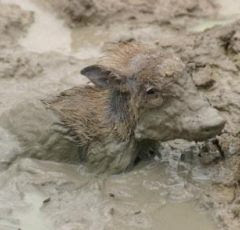These combined results form an almost perfect standard deviation curve that shows that about 66% of the model's results lie within a range between 1.5C-4.5C degrees. Consequently, 97% of climate scientists agree [the consensus] and use 3C as the most probable projection of global warming when the CO2 concentration in the atmosphere doubles.
Sciences like climate science, and economics that have limited, or no, access to results from repeatable, double blind, experimentation must rely on statistical probabilities to make prognostications about future events. Remembering back a few years at least 97% of the economic models said all was going well and everyone should buy more-more-more. And they were right, until the occult interdependent feedbacks within the financial system crossed some unknown threshold, and they weren't.
Just ask the casino owners in Vegas, probabilities work. Casinos make lottsa dough by understanding probabilities. They know.that every time a bet is made the probabilities, the odds, are that they'll win slightly more than they'll lose. They also know that sooner or later someone will hit the jackpot and set the jackpot limits so as to not bankrupt the casino. In fact casinos love jackpot winners, they plaster the walls with their pictures to encourage more gamblers to make more gambles. Jackpots mean more bets have been made, more profits made by the casino. It's all in the odds.
The standard deviation curve above shows that there is also 16% of the time that the results are below the 'consenous' and 16% of the results are above it. It also shows that the results on either end never reach zero, that there's always a possibility that some combination of initial conditions and unknown feedback interactions can result in a very low probability, non-linear, black swan type outcome.
Jackpots are black swans, they happen. When they happen in Vegas somebody is very happy, when they happen in the climate model casino the environment that sustains us all could cross some threshold that makes us all very extinct, it's all in the odds too. The moral of the story is: don't bet what you can't afford to lose. If you lose big at the casino you can go back to the real world, get a job, earn more money, then choose to return to the casino or not. If you lose big at the climate model casino there's no second chance. One type of bet is exciting the other type of bet is stupid. Whether you consider it or not, when walking into a casino you've already taken some precautions: you know you won't be betting your life or your family's, for instance, and because you know it's only money, you also know it's not THE END.
Tomorrow we'll look at the role thresholds and tipping points play in our scientific understanding of the world generally and the role they appear to have played in our earth's geologic and climatic past. Then we'll touch on a few of the gorilla sized unknown-unknowns of science in general and where some of our environment's gorillas might be hiding in plain sight of us all.



